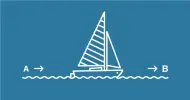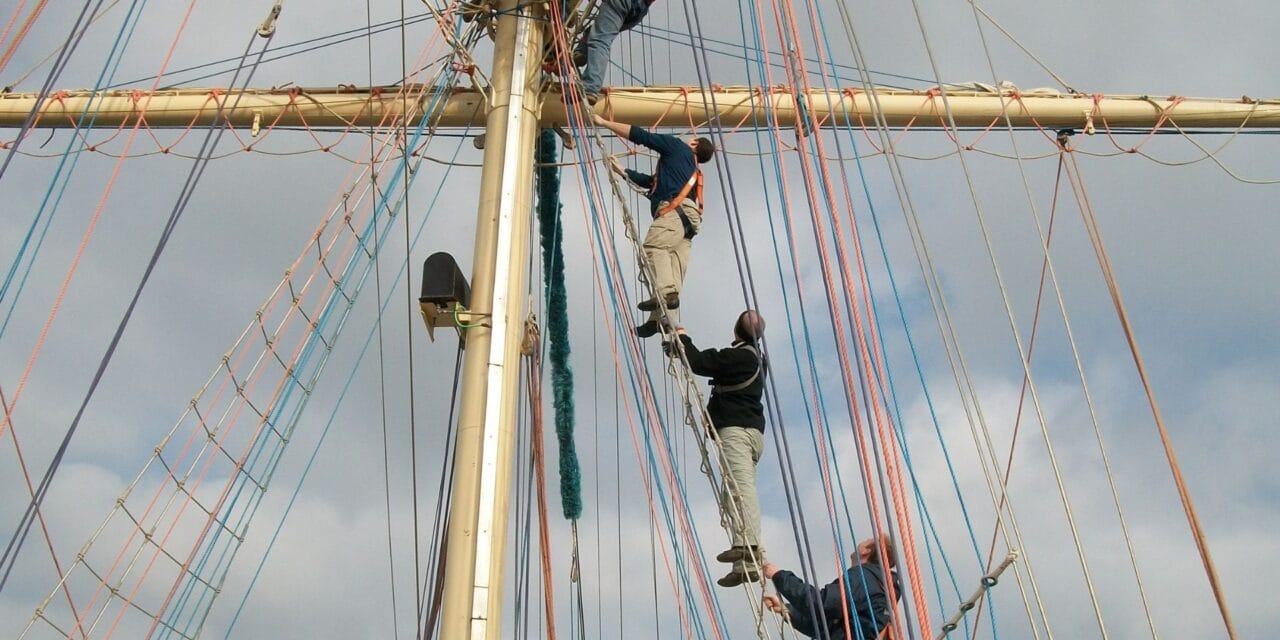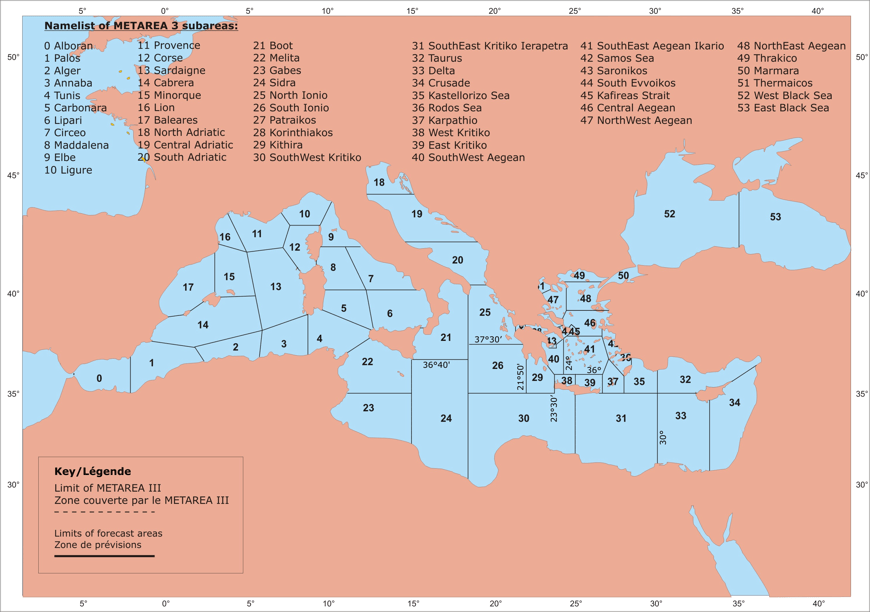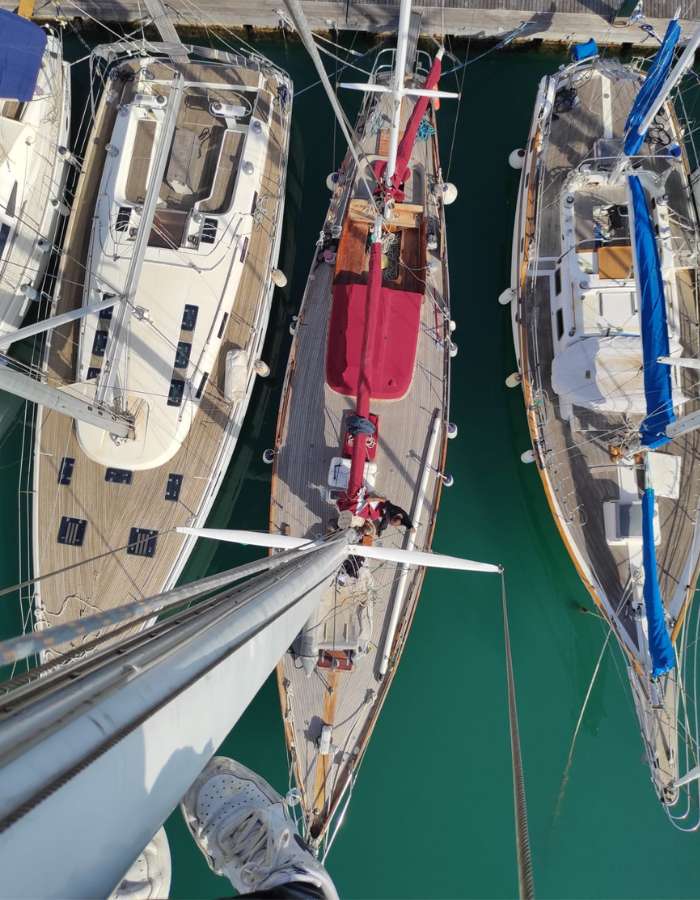The Majestic Square Sail Rigging: A Window into Tall Ships Maritime History
Introduction
The sight of a tall ship under full sail, square canvas billowing in the wind, evokes a sense of adventure, exploration, and a bygone era of maritime prowess. Square sails, often draped on the masts of towering ships, played a pivotal role in shaping global trade, exploration, and naval history. In this post, we will explore the significance of square sails, the types of vessels that used them, and their lasting legacy on the world of sailing.
The Origins of Square Sails
Square sails are one of the oldest forms of rigging, tracing their origins back to ancient maritime civilizations. Initially used by the Phoenicians and Greeks, square sails evolved over centuries into the towering structures that powered European exploration from the 15th century onward. As shipbuilding techniques advanced, so did the sails, allowing for greater efficiency in harnessing wind power.
The simplicity of their design – a rectangular sheet hung perpendicular to the length of a ship – allowed vessels to capture the wind most effectively when sailing downwind. This made square sails ideal for long, transoceanic voyages, where ships could take advantage of prevailing wind patterns.
Key Historical Milestones:
- Ancient Phoenicians: Pioneered the use of square sails for coastal trading in the Mediterranean.
- Viking Longships: Combined square sails with oars for versatility in both open seas and shallow waters.
- Age of Exploration: Square-rigged ships, like the Santa María and HMS Victory, played a central role in European global expansion, including Columbus’s journey to the New World and Nelson’s victories in battle.
How Square Sails Work: Harnessing Wind Power
At their core, square sails are designed to maximize wind capture, particularly for downwind sailing. Their large surface area ensures that the ship can catch as much wind as possible, propelling it forward. For long ocean passages, this efficiency was invaluable, making square-rigged vessels indispensable for international trade.
Advantages of Square Sails:
- Maximum Wind Capture: Square sails are excellent at capturing wind when traveling with the wind behind them (downwind).
- Efficient for Ocean Voyages: These sails allowed ships to make long, uninterrupted voyages by riding prevailing wind patterns, such as the trade winds.
- Powerful Visuals: The image of a square-rigged ship with its sails fully set is one of the most iconic symbols of maritime history, emphasizing the ship’s power and beauty.
Types of Square-Rigged Vessels
While we often associate square sails with large ships, various vessels employed a combination of square and fore-and-aft sails to optimize their sailing abilities.
Common Square-Rigged Ship Types:
- Full-Rigged Ships: These majestic vessels carry square sails on all masts, giving them a commanding presence on the water. Ships like the Cutty Sark and HMS Victory belong to this category.
- Barques: Featuring square sails on the fore and main masts, with fore-and-aft sails on the mizzen, barques are known for their balance of power and maneuverability.
- Brigs and Brigantines: Smaller than full-rigged ships, brigs carry square sails on two masts, while brigantines combine square sails on the foremast with fore-and-aft sails on the mainmast. These ships were often used for coastal trade and naval warfare.
Key Example:
- The famous clipper ships of the 19th century, like the Flying Cloud, used square sails to achieve unprecedented speeds, shaving weeks off journeys between Europe, America, and Asia.
Sailing a Square-Rigged Ship: A Team Effort
The art of sailing a square-rigged vessel was a demanding and dangerous task that required a skilled and disciplined crew. Handling the massive sails and rigging was no easy feat, with sailors frequently climbing high into the rigging, often in dangerous weather conditions.
Sail Hierarchy on a Tall Ship:
- Foremast: Fore Course, Fore Topsail, Fore Topgallant
- Mainmast: Main Course, Main Topsail, Main Topgallant
- Mizzenmast: Mizzen Course, Mizzen Topsail, Mizzen Topgallant
Each sail had a specific function, and coordinating the adjustment of these sails to catch the wind effectively was a matter of precision. The complex system of lines and rigging had to be adjusted constantly, depending on the wind direction and force. For this reason, teamwork and communication were crucial aboard a square-rigged ship.
Factors That Affected the Speed of Square-Rigged Ships
The speed of a square-rigged ship depended on several factors, both environmental and technical. While the vast surface area of square sails helped in catching the wind, other elements played a critical role in determining how fast these ships could travel.
Key Factors:
- Wind Speed and Direction: Square sails are most effective when sailing downwind. A ship’s speed would vary significantly depending on wind strength and angle.
- Sea State: Rough seas could slow a vessel considerably, while calm seas allowed for faster, smoother sailing.
- Sail Condition: Well-maintained sails and rigging were essential for maximizing speed. Tattered or poorly set sails could greatly hinder performance.
- Displacement: Heavily laden ships would sail more slowly, while lighter vessels, with less cargo or ballast, could reach higher speeds.
The Clipper Ship Era: Speed and Efficiency
The pinnacle of square-rigged ship design came during the clipper ship era in the mid-19th century. These ships were designed for speed, with sleek hulls and large sail areas. Clippers like the Cutty Sark and Thermopylae became famous for their lightning-fast voyages, particularly on routes between Europe, China, and Australia. Their design allowed them to cut weeks off journeys that once took months, making them the fastest ships of their time.
Famous Clipper Routes:
- The Tea Trade: Clippers raced from China to England with precious cargoes of tea, with the first ship to arrive commanding the highest prices.
- The Gold Rush: Clippers transported prospectors to California and Australia during the gold rushes, capitalizing on the demand for rapid transport.
Life On Board a Square-Rigged Ship
Living and working on a square-rigged ship was not for the faint-hearted. The work was hard, dangerous, and often took place under challenging conditions. Sailors faced storms, high seas, and the ever-present risk of falling from the rigging.
Key Experiences:
- Climbing the Rigging: Sailors had to ascend the rigging to furl and unfurl the sails, often in high winds and rough seas.
- Manning the Helm: Steering a massive square-rigged ship required strength and skill, particularly in bad weather.
- Daily Routines: Life aboard involved long hours of work, punctuated by short periods of rest, often in cramped, damp quarters below deck.
Despite the hardships, many sailors were drawn to the sea by the promise of adventure and the allure of distant lands. Today, modern tall ship cruises offer the public a glimpse into this world, allowing participants to experience the thrill of sailing a square-rigged vessel firsthand.
The Decline of Square Sails in Commercial Shipping
By the late 19th century, steam-powered ships began to replace square-rigged vessels as the dominant force in commercial shipping. Steam engines provided a more reliable and consistent source of power, allowing ships to travel at greater speeds regardless of wind conditions. Square sails, with their dependence on wind and complex rigging, gradually fell out of favor.
However, square-rigged ships continued to serve as training vessels for naval academies, floating museums, and symbols of national pride. Today, tall ships still participate in regattas and festivals, keeping the legacy of square sails alive.
The Legacy of Square Sails
Though their era of dominance has passed, the legacy of square sails endures. Tall ships continue to inspire awe and admiration wherever they sail. They serve as floating museums, offering a tangible link to maritime history. Events like the Tall Ships Races celebrate this heritage, drawing large crowds to witness the beauty of these majestic vessels under full sail.
Square sails remind us of a time when the world’s oceans were uncharted frontiers, where daring explorers and traders ventured into the unknown. They embody the ingenuity of shipbuilders and the courage of sailors who navigated by the stars, trusting in the wind and their vessels to carry them to distant lands.
Conclusion
Square sails represent more than just a method of propulsion; they are a symbol of human ambition, ingenuity, and the spirit of adventure. From the early Phoenician traders to the mighty clipper ships that raced across the oceans, square-rigged vessels have played a crucial role in shaping the course of maritime history. Today, as we sail into the future, these ships stand as a reminder of the courage and skill that once carried humanity across the waves to explore new worlds.
By preserving and celebrating this rich legacy, we ensure that future generations can continue to marvel at the beauty and majesty of square sails and the ships they powered.









